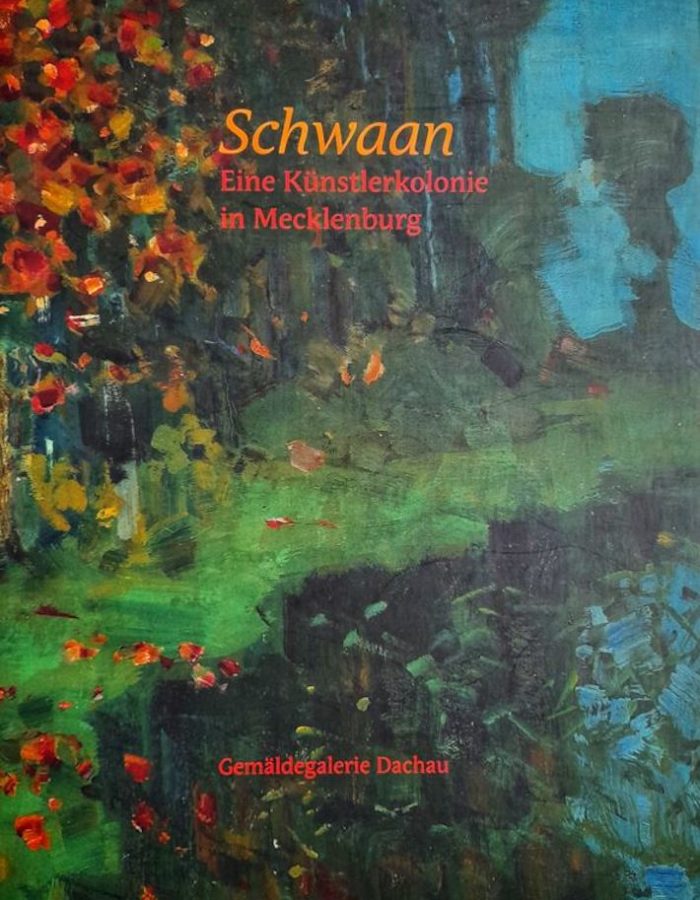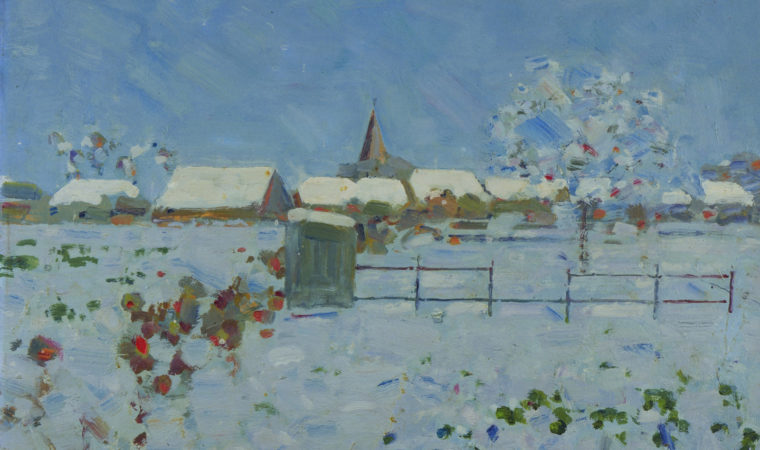In the second half of the 19th century – as in many small places scattered all over Europe – an artists’ colony also developed in Schwaan, a farming town just outside Rostock. The river landscape between the Warnow and Beke rivers, surrounded by gentle hills, offered landscape painters many attractive motifs. Around the middle of the 19th century, draughtsmen and painters stayed there. However, the place only became an artists’ colony through Franz Bunke, a native of Schwaan. He taught landscape painting in Weimar and from 1892 onwards regularly brought colleagues and students with him in the summer. The circle of artists there also included Paul Baum and Richard Starcke, the local painters Rudolf Bartels and Peter Paul Draewing, and Alfred Heinsohn from Hamburg. Bartels in particular is considered one of the most important artists in Mecklenburg in the first half of the 20th century because of the formal language he developed around 1905. The outbreak of the First World War ended the heyday of the artists’ colony.
100 p. with numbers Fig., Dachau 2012
ISBN 978-3-930941-76-6
Language: German

